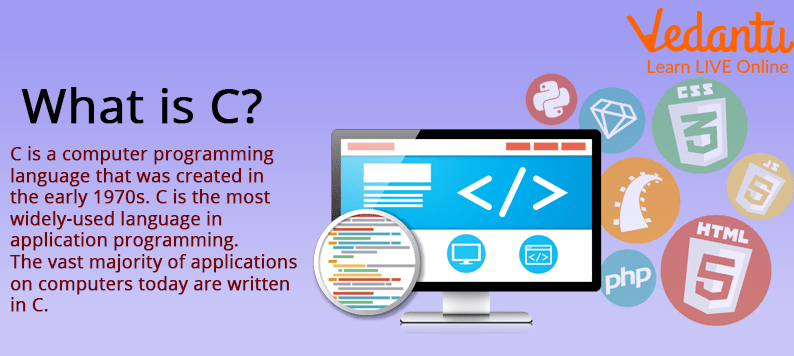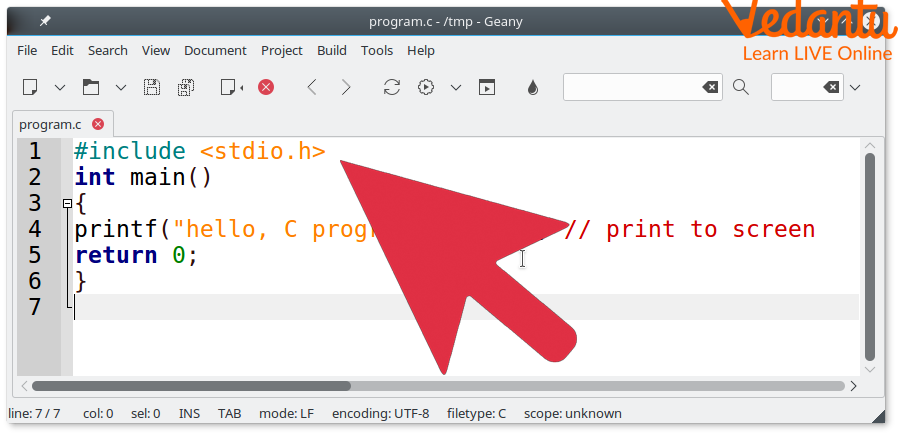Learning C Language for Kids
The computer does exactly what it is instructed to do, no more and no less; "C" is an instructional language that tells the computer exactly what to do. C is a powerful but difficult programming language that allows you to create various programs. You would use "C" when designing your hardware or software. For example, games like Halo are created using "C". C language is a procedural language that tells a computer what tasks it should complete sequentially.
Want to get a bird's eye view of how C works? This article will explain the C language for kids!

What is C?
What is C Language?
C is a computer programming language that was created in the early 1970s. The original use for C was to create system software on UNIX-based computers and then later came to be used as the assembly language for applications such as word processors and databases from vendors including Microsoft and Oracle Corporation.
C is the most widely-used language in application programming. The vast majority of applications on computers today are written in C.
You might be thinking, how could something like a computer be programmed with "words"? Well, it's like if you have a recipe for something, and then say you have flour and eggs, but you also have to add baking soda, baking powder and salt for the recipe to work. So, there are additional components to C language used in computer programming.
Basic C Definition
The C programming language is similar to the BASIC language in that it consists of only a few basic commands, which are separated into blocks called statements. C statements may be grouped as statements inside a block, which is then enclosed with braces { and }, or put on separate lines in an expression, also enclosed with braces. The general form follows:
Examples
1. { statement 1; statement 2; }
2. expression 1; expression 2; expression 3; ... ;
To understand how these statements work, you'll need to learn about variables and operators. In C language, variables are placeholders that store data. Some examples of variables are age, height, speed, and name. After much practice with the language and programming logic, you'll learn to identify their structure to write more efficient code.
Pros and Cons of Using C Language
There are many pros to using the C language, either as a beginner or an already advanced person in computer programming.
The Benefits (Pros) of C Language
Bootstrapping: This is a feature of a new program that starts without any other source code when you learn the c language basics. Browsers use this feature to load the new page before it downloads all dependencies from their servers. This avoids errors that might arise during the download and other network problems. A similar feature in the application allows it to load the language before all other dependencies (such as external libraries) are loaded. This allows the application to be faster, especially on slower networks.
Security: C is very secure due to its fundamental data type system (variables can only be one of two types: integer or floating point). This makes it difficult to execute any negative code, leaving much less room for error.
Speed: The newest version of C (C99) offers a very fast compilation speed, making it possible for people to develop more quickly and for larger projects.
The Disadvantages (Cons) of C Language
Compatibility: Theoretically, C has very low compatibility with other languages and, as such, is more difficult to transfer from one language to another. You will know when you see a c language tutorial that this is due to its various features, such as the use of pointers, the typecasting system and the use of exceptions. However, many people have no trouble transposing code from one language to another user in a similar fashion to programming.
Portability: C does not support 32-bit applications at this time (This is because it was designed for UNIX operating systems only). Therefore, many 32-bit applications are made using another language, such as Java. NET.
Errors: Many potential errors can arise from using C. This is because it doesn't check for these errors, and the user must provide all of the information to tell the system whether or not an error should be caught by the program.

Learning C Language Basics can be Beneficial for you in the Long-run
Features of C Language
C is a compiled language, which means that the information in the source code (the commands to be executed) must first be converted into machine language. You will learn after watching a c language tutorial that machine language is what the computer understands, and it is used to execute programs on computer systems.
Summary
In conclusion, C is a great programming language for performing many tasks, including embedded systems and device drivers. It's very easy to read and understand. It doesn't have too many commands, and it has no looping commands. This makes it ideal for entry-level programmers who don't want to deal with the headaches of high-level languages with so much detail.
We hope that this has led you to a better understanding of the C language. You should now have a basic understanding of what the C programming language is and what it takes to become a programmer, or at least know how to write some code.


FAQs on C Language for Kids
1. What is machine code?
Machine codes, also referred to as binary or object codes, are the ones and zeros that make up programs. The code is stored on a data storage device such as RAM or ROM and is used by the CPU to execute the program.
2. What kind of language can I write in C?
There are several forms of C programming, including C++ and Objective-C. Each of these languages has its advantages and disadvantages.
3. What is a variable?
A variable is a named piece of data that holds a value. The value can be typed or untyped, but it must be defined before it is used (space permitting). Variables help to make programs more readable and maintainable by avoiding repetition or ambiguity in certain parts of the program.




